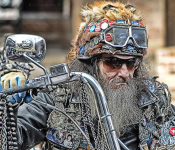In fact, this is a movie we’ve seen before. The unification of the Navy, Army and Air Force in 1968 was another grand experiment in social engineering in the military setting. Defence Minister Hellyer’s stated objective was not just to eliminate duplication and save money, but also to establish Canada (and thus himself) as a “leader” among the world’s militaries. In Nov. 1966, he was quoted as saying that unification would “provide the flexibility to enable Canada to meet in the most effective manner the military requirements of the future. It will also establish Canada as an unquestionable leader in the field of military organization” (my emphasis). [Quoted in L. Milberry, Sixty Years: The RCAF and CF Air Command 1924–1984. Canav Books, p. 367.]
Reading this statement now seems laughable. But in light of most professional military opinion at the time, it also seems like the worst sort of political hubris. Canada is no more seen as “an unquestionable leader” in military organization than we are in the field of military procurement. And, frankly, the history of our Armed Forces since 1968 has largely been one of trying to undo the harm wrought by Mr. Hellyer and his protégés. But the real problem with Hellyer’s unification project wasn’t the idea itself. Rather, it was the fact that no evaluative criteria — and thus, no easy off-ramp if it wasn’t working — were built into the scheme. But that’s what typically happens when the military is used as a guinea pig for social engineering.






